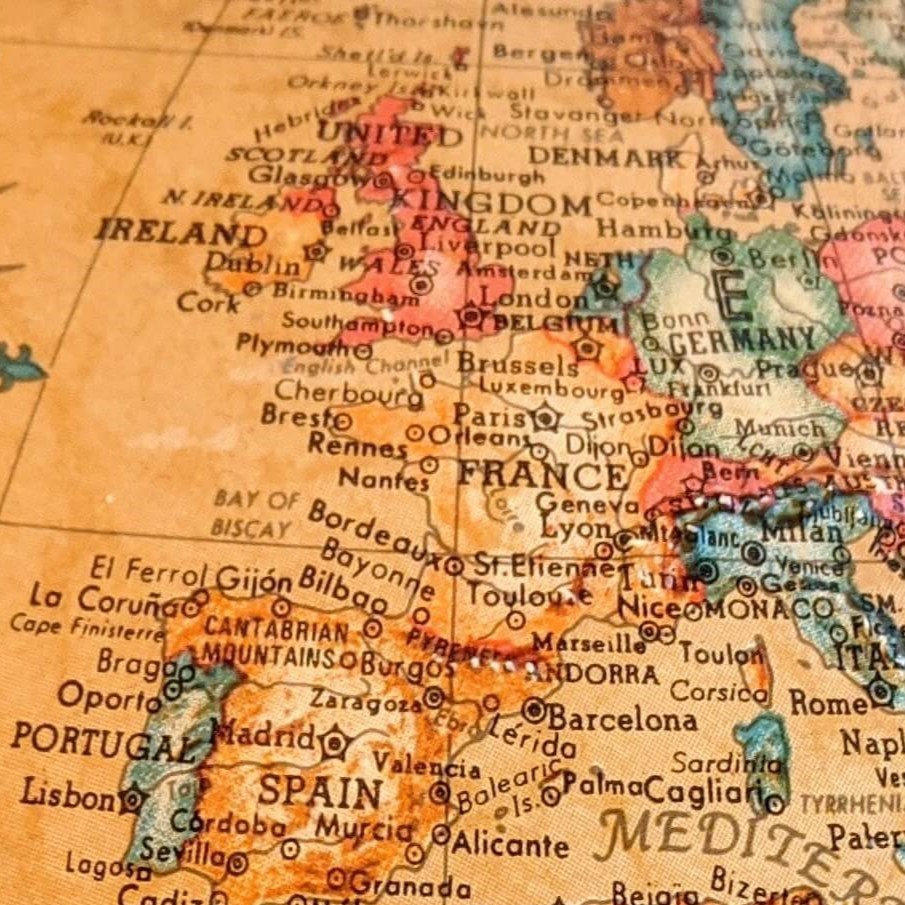Published:
Europe’s three largest economies by nominal GDP are Germany, the United Kingdom, and France. As the entire continent struggles through a period of economic turmoil that began in late 2022, how are its top three economies faring?
Germany has contracted sharply, entering a recession as it experiences a second consecutive quarter of negative GDP growth in May. The United Kingdom is expected to avoid recession but is vulnerable to high inflation. And France, strangely, has enjoyed somewhat consistent growth, but the risk posed by economic turmoil across the continent continues to loom. The common threads among these European superpowers are rising food and energy prices, supply bottlenecks, and decreased household spending. Below, we examine how their situations differ.
By conventional definitions, Germany officially entered a recession in May of this year when it experienced its second consecutive quarter of negative GDP growth. The two contractions were a 0.5% drop at the end of 2022 and a 0.3% drop in the beginning of 2023. While the early months of the pandemic remain the German economy’s most tumultuous in recent history, household spending and overall economic activity have now slowed to the lowest points since the worst of 2020. The main culprit for Germany’s struggles are its much greater reliance on Russian oil, compared to the UK and France. High energy prices have caused contractions in the chemical industry, where production has dropped 18% since 2019, and in the auto industry, where production dropped to levels 26% lower than in 2019. As Europe’s largest economy, the impact of weak growth in Germany cannot be understated, and Germany is much of the reason that the Eurozone as a whole is also in recession as of June.
In the United Kingdom, meanwhile, the outlook is less certain but perhaps even more grim. The bank of the UK raised interest rates 14 consecutive times in an effort to combat historically stubborn inflation. On Thursday, September 21, this streak finally came to an end as the bank voted to maintain its current rate of 5.25%. Though the efforts of the bank have worked and inflation levels have dropped, the annual consumer price index still sits at a steep 6.7%. While the UK economy is not shrinking as overtly as Germany’s, their struggles with inflation may be leading them to an equally harsh outcome: stagflation.
Stagflation is characterized by persistent inflation and high unemployment, and it is especially difficult to resolve because the measures that combat inflation often increase unemployment. In addition to domestic price increases, another sign of stagflation is a decrease in value of the British Pound, which has weakened against both the Euro and US dollar. Stagflation will be a key concern for the UK moving forward, as incongruent trends in the economy (for example, a rapid increase in wages despite sluggish growth in GDP) continue to pose a unique and complex challenge to economists and policy makers.
Finally, and perhaps most surprisingly, the French economy is performing relatively well. Despite high energy prices and supply chain bottlenecks in late 2022 and early 2023, growth continues to be the expectation for France. The economy’s GDP is expected to grow by 1% by the end of 2023, and an additional 1.2% in the 2024 fiscal year. French leadership is optimistic about their continued prosperity in comparison to the other European superpowers, with finance minister Bruno Le Maire claiming that France is becoming the “Locomotive of Europe” on a recent visit to Berlin. But perhaps the dire situation in Germany and the UK is only flattering France, and French optimism is only distracting from the fact that they too are at risk of economic contractions. After all, the Eurozone as a whole experienced a collective recession of -0.1% earlier this year. In fact, France finds themselves in third from the bottom in terms of GDP growth among G-7 countries—outperforming only Germany and the United Kingdom.
File under






